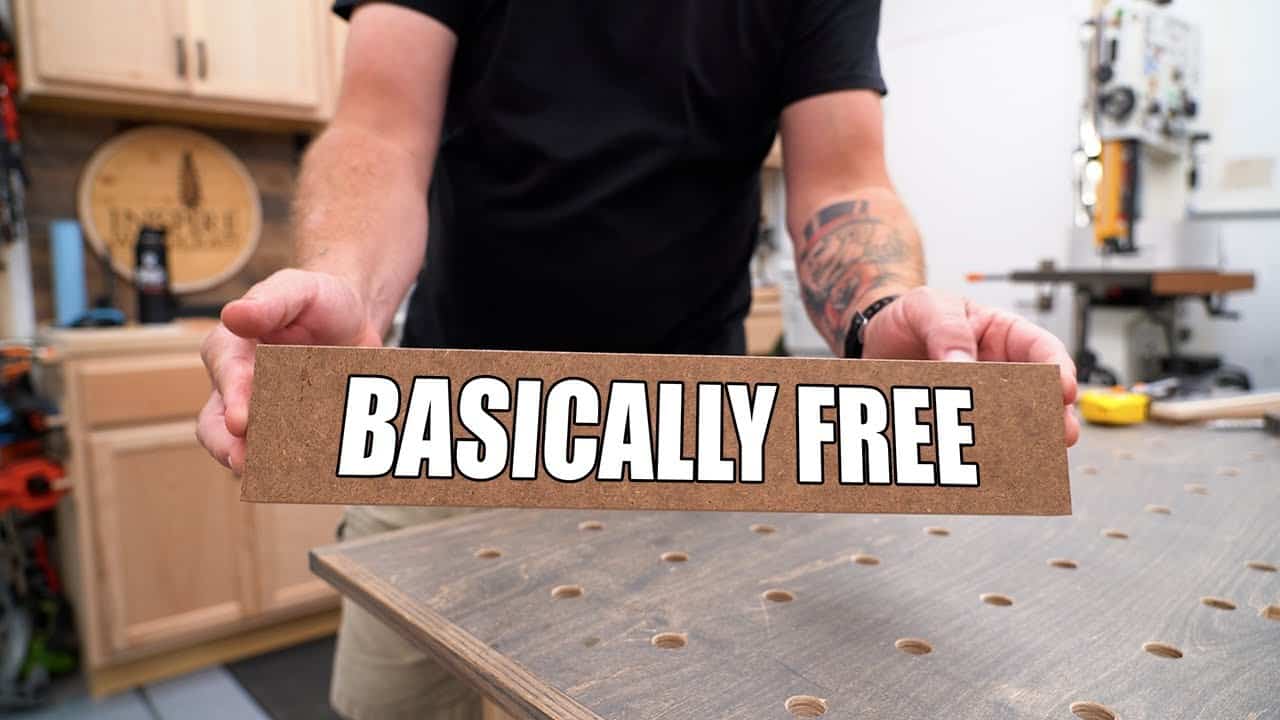This tip comes from Jodee at Inspire Woodcraft.
It features a sandpaper-backed MDF strip—a surprisingly versatile shop accessory made from scrap and used across multiple tools for safer, more accurate work.
It might look basic, but this strip combines a rigid flat edge with an abrasive surface, giving woodworkers a low-cost solution for guiding, holding, and feeding materials at the table saw, router table, jointer, and more.
Watch the full video and subscribe to Jodee’s channel:
Why It Works So Well
The strip is made from a medium-density fiberboard (MDF) base with sandpaper glued along one face and one edge. This pairing creates two key benefits: a flat reference surface for accurate alignment and a high-friction face that prevents slipping during cuts.
It’s not a complex jig, but it handles a wide range of jobs. Whether used as a makeshift guide, a push block, or a temporary squaring aid, the strip fills the gap when more specialized tools are out of reach.
Common Uses in the Shop
This tool started as a support for another jig but quickly became a go-to around the shop. Over time, it found a place in multiple workstations.
1. Straightening Crooked Boards
When ripping a board with a bowed or damaged edge, placing the sandpaper side down allows the MDF to ride against the saw’s fence instead of the uneven board edge. The result is a clean, straight rip that can be used for further cuts.
2. Squaring Up Large or Irregular Panels
Sheet goods or panels with curved edges can be tough to square. This strip provides a temporary flat edge that rides along the saw fence. Once the first edge is straight, the remaining sides can be squared off with ease.
3. Making Tapers or Thin Rips
A longer version of the strip keeps narrow workpieces flat against the table, helping with taper cuts or very thin rips. A shorter version becomes a handy thin-rip jig with built-in grip and guidance.
4. Safer Bandsaw Resawing
Resawing can bring fingers uncomfortably close to the blade. In those situations, this MDF strip serves as a reliable push block, keeping hands back while maintaining full control over the stock.
5. Holding Short Pieces at the Miter Saw
Short pieces tend to move around while cutting miters. By using an offcut to elevate the strip and placing it on top of the workpiece, Jodee shows how to hold everything still for safer, cleaner cuts.
6. Router Table Feed Support
During template routing or complex profiles, the strip can be positioned flush against the fence to serve as a guide. It can also replace a push pad temporarily, helping reduce chatter and maintain surface contact.
7. Backup Push Pad at the Jointer
If the dedicated push blocks aren’t within reach, this strip offers a quick substitute. The sandpaper helps move the board safely over the cutter head, especially with narrow or irregular stock.
Making One for Yourself
The build process is intentionally simple and flexible. Jodee encourages making multiple strips in different sizes based on shop needs.
Start with MDF or any stiff, flat material. Cut it to a length and width that feels comfortable for your hands and the machines you use most. Attach sandpaper along the face and edge using spray adhesive or double-sided tape.
The goal isn’t precision—it’s usefulness. Wider strips work well for guiding panels; shorter ones are perfect for miters or thin rips. A few quick offcuts and a bit of glue are all it takes to put one together.
Tips and Variations
- Grit selection: Medium grit offers enough grip without damaging finished faces. If surface marking is a concern, go with a finer grit or limit sandpaper placement.
- Temporary vs. permanent: Spray adhesive creates a strong bond, while double-sided tape allows the sandpaper to be replaced more easily.
- Alternate materials: Plywood, hardboard, or plastic can all work as long as the material is flat and rigid.
- Additional uses: Mount a handle to one for a full-length push block or make a slim version for ultra-thin rips.
Safety and Common Sense
This jig increases control, but it’s not a substitute for good technique. Always keep your hands away from the blade or bit, and don’t rely solely on friction to hold a workpiece during tricky cuts.
Use proper push blocks, featherboards, and guards when needed. And if you’re working with softer woods, be aware that coarse sandpaper might leave marks—adjust grit or placement accordingly.
Why It’s Worth Keeping Nearby
What makes this jig stand out is how often it gets used. It’s inexpensive, easy to make, and genuinely improves workflow at multiple tools. Once you’ve used one for holding or guiding stock, it quickly becomes a shop favorite.
Instead of buying multiple single-use accessories, Jodee’s approach offers a flexible, low-cost alternative that meets a variety of needs. Keeping a few of these strips on hand can streamline everything from setup to final cuts.
Support Jodee by visiting his online store here: https://inspirewoodcraft.com/collections/all.
